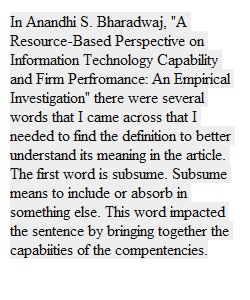


Q As consumers of information, we need understand the main idea of the text we are reading. What does the author want us to know? Without this information, we can often wind up wondering what the point of the text was, or we can feel confused about what we read. Lack of understanding leads to lack of engagement. It also leads to a reader feeling as if the reading they just did was a waste of time. So it's important that you understand how to identify pertinent information in a text--to avoid these issues. It's important to take a moment to note that close reading and reading for pleasure are two different things. When we read for pleasure, it's a lot like watching television, listening to music, or other forms of entertainment--we're reading for the experience. For the joy of the process. Close reading, however, requires that we engage with the text, that we have a conversation with it, and that we work to understand what is going on below the surface.When discussing reading skills in this course, it should be understood that we are talking about these skills in relation to close reading, which is the type of reading you should be practicing in academic environments. Annotating the text we are reading is one way to practice close reading, and it's a skill that you'll be working on in 1301. It's a skill that assists us with identifying parts of the text, such as the main idea, as well as something that helps us to track our thoughts and questions as we move through a passage. Annotations often include: a. Brief summaries: Write a one or two sentence summary every 2–3 paragraphs. b. Identification of main ideas: Underline the most important parts that give you a sense of what the author is trying to communicate. c. Key words: Circle specific word choices that may give you a sense of the author’s tone or perspective toward the subject. d. Other marks that might be included: Some students are visual learners and may want to draw brief sketches of important information. Some students may want to draw arrows between sections of the text that relate to each other. As part of your Reading Skills Practice, you will use this discussion board to practice and work with the concept of identifying the main idea. Below, you will find a bulleted list outlining your tasks for this discussion. In ENGL 1301, you will be reading "A Few Words About Breasts" by Nora Ephron for Unit 1. Following the reading, please do the following: • Identify the main idea of Ephron's personal narrative. Provide a quote to support your identification, as well as a 5-7 sentence explanation of why you think this is the main idea. • What evidence does Ephron use to support and/or build upon the main idea? Provide 3-5 examples, along with an explanation for each choice. • Did you feel that it was easy to identify Ephron's main idea, or did you have trouble locating it? Explain your response. • Read over one of your classmates' discussion board posts. • Respond with whether or not you agree to their responses for bullets 1-3 and why.
View Related Questions